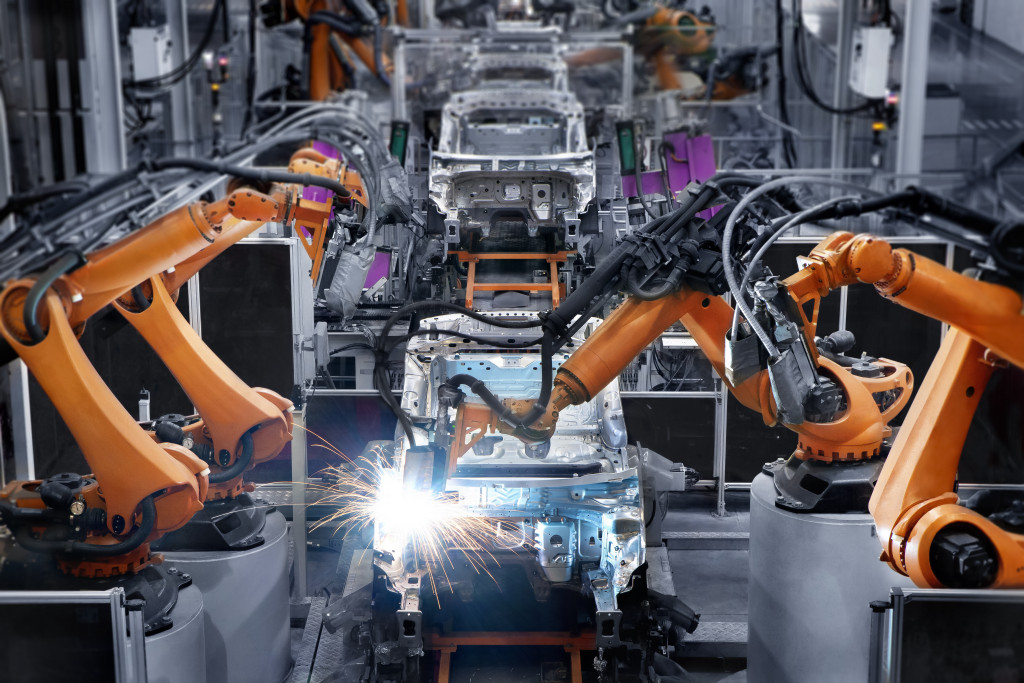The manufacturing industry in the United States is one of the largest in the world. It’s estimated to be worth two trillion dollars. It contributes to the country’s GDP and employs millions of people.
There’s no denying that manufacturing plays a vital role in our economy and society. And over the years, manufacturing plants have made significant improvements. Here are five ways they’ve gotten better:
Improved AI
One of the biggest improvements in manufacturing plants has been the increased use of artificial intelligence (AI). AI can help factories run more efficiently and make better products.
For example, manufacturers can use AI to optimize production schedules and identify potential problems with equipment. It can also help workers troubleshoot issues and improve safety.
Another way AI is being used in manufacturing is to create digital twins. Digital twins are virtual models of real-world objects, like machines or products. Manufacturers can use them to test new designs or simulate production processes. They also use these digital twins for various tasks, such as predicting how a new design will perform or identifying potential problems with a production line.
Lastly, as AI improves over time, so as its computing power. Next-generation MRAM industrial computing offers faster data processing, more I/O, and lower power consumption for demanding applications. These things can decrease overall costs while increasing productivity within an automated manufacturing plant.
AI plays a huge role in manufacturing, and through these roles, AI is making plants more productive without increasing overall costs.

Automation
Another significant improvement in manufacturing plants is the increased use of automation. Automation can help factories run more efficiently and produce higher-quality products.
For example, automated machines can work faster and more accurately than humans. They can also work for longer hours without getting tired. Additionally, manufacturers can program computerized devices to perform specific tasks, which helps to ensure consistent quality.
There are many different types of automation, but first, let’s talk about autonomous vehicles in the industry.
Improved Logistics
It’s estimated that there will be two million autonomous vehicles in the country by 2025. It will eventually skyrocket to 20 million by 2030. Manufacturers use these vehicles for various tasks, such as delivering goods and materials or providing transportation to employees.
But autonomous vehicles aren’t the only type of automation used in manufacturing plants. There are also robots.
Industrial Robots
Industrial robots are often used for welding, fabricating, and assembling. According to the International Federation of Robotics, more than three million industrial robots are in use worldwide. This number is expected to grow to four million by 2024.
The use of robots helps to improve the quality of products while also reducing production time and costs. Additionally, robots can work in hazardous environments, which helps to improve safety for workers. There are also drones being used in the industry.
Drones
Drones are used for various tasks, such as inspecting equipment, delivering goods, and providing security. They offer a safe and efficient way to perform these tasks.
Additionally, manufacturers can use drones to collect data. This data can be used to improve the efficiency of manufacturing plants.
Improved Materials
Over the years, there have been many improvements in the materials used in manufacturing. For example, more robust and lighter-weight materials are now available. These materials can help to improve the quality of products while also reducing production time and costs.
In addition, new types of sensors are being developed that can help to improve the accuracy of machines. These sensors can also help to reduce waste and increase safety.
Lastly, 3D printing is becoming more common in manufacturing. This technology can help reduce production time and costs while providing more flexibility.
3D Printing
3D printing is a type of additive manufacturing. It’s used to create three-dimensional objects from a digital file.
Manufacturers use 3d printing to develop prototypes or small batches of products. However, it’s also used to make larger items, such as buildings and bridges. It offers many benefits, such as reduced production time and costs. Additionally, it provides more flexibility when it comes to design. For example, if a part needs to be changed, it can be easily updated in the digital file and then reprinted.
The main advantage of 3d printing is that it offers a fast, efficient, and affordable way to produce small batches of products. Additionally, 3d printing is very flexible and can be used to create various products. However, it’s still a relatively new technology, so some limitations exist.
Manufacturing plants have come a long way over the years. With the help of technology, they are more productive than ever before. Additionally, they can produce better-quality products at a lower cost. It’s good news for both consumers and businesses alike.